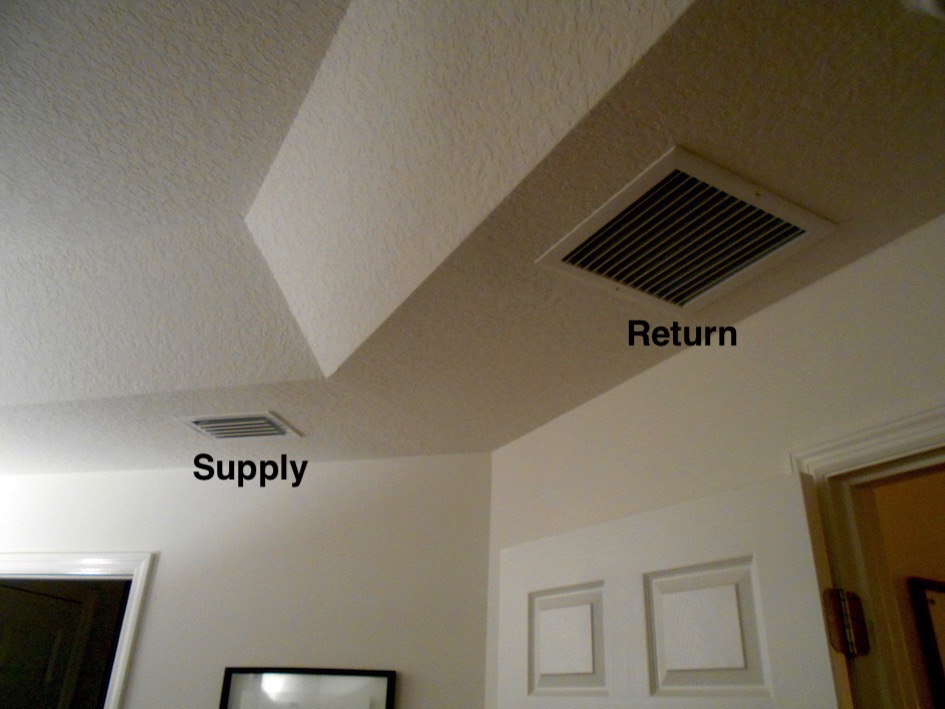How Cold the Air Blowing From My AC Vent Should Be?

Have you ever wondered, how cold should ac blow to make my room cold? It’s a common question among homeowners who want their air conditioner to make them feel cold and comfortable. The answer to this question is not as simple as setting a specific temp on your thermostat.
In fact, the ideal temperature for your AC to blow depends on several factors, including your personal comfort level, the outdoor temperature, and the humidity levels in your home.
Air conditioners don’t create “cold” air. Instead, they remove heat energy from the existing air and recirculate the cooled air throughout your home.
In this article, we’ll explore the factors that influence how cold your AC should blow and provide tips on how to optimize your air conditioning system’s performance to achieve the perfect balance between comfort and energy savings.
Contents
What Should Be The Right Temperature for My AC Unit?
The optimal temperature for your AC unit depends on several factors, including the weather outside, your personal comfort preferences, and energy efficiency considerations. In general, most homes can feel comfortable with a temperature setting between 70-75° Fahrenheit. However, the U.S. Department of Energy (DOE) recommends setting your thermostat to 78° F during the summer months.
This recommendation is based on several factors that aim to optimize energy usage and minimize the environmental impact associated with summer AC cooling.
The temperature of the conditioned air coming out of your AC vents will typically be around 15-20° cooler than the ambient room temperature. So, if your thermostat is set to 78°, you can expect the air blowing from your vents to be between 58-63 degrees Fahrenheit.
What Factors Determine the Temperature of Air Coming from Your Air Conditioner?
Three key factors influence the temperature of the air coming out of your AC vents: AC system efficiency, thermostat settings, and supply and return air differential.
1. AC System Efficiency
The efficiency of your air conditioning system plays a significant role in determining the temperature of the air it produces. An air conditioner’s efficiency is measured by the energy efficiency ratio (EER). The higher the EER rating, the more efficient the air conditioner. An efficient system will be able to remove more heat from the air, resulting in colder air coming from your vents.
2. Thermostat Settings
Your thermostat is responsible for controlling your unit, sensing the ambient air temperature, and signaling the unit to cool the space when needed. For your AC to blow cold air, set the thermostat to “Cool” mode the temperature should be set lower than the ambient temperature.
The U.S. Department of Energy (DOE) recommends setting your thermostat to 78° F when you’re home and 85° when you’re away during the summer months.
According to Project Drawdown smart thermostat can help you optimize your settings, saving 10-15% on your energy needs while improving comfort and convenience.
3. Supply and Return Air Temperature Differential
The temperature difference between the air entering your air conditioner and the air being blown out of your vents is known as the supply and return air differential. Ideally, the difference should be a 16° to 22°F.
If the temperature differential is not within this range, it may indicate that your unit has an issue that needs troubleshooting.
How to Measure the Air Temperature Differential Accurately
1. Locate The Supply and Return Air Vents
Identify the supply vents and return air vents in your home. Supply vents are typically located on the ceilings or floors and are responsible for delivering cool air from your AC into the room.
Return air vents, on the other hand, are usually larger and located on the walls or ceilings. They draw warm air from the room back into the air conditioning system to make sure the air coming out of the vent is cold as it should be.
2. Use an Infrared Thermometer
An infrared thermometer is a handy tool that allows you to measure the temperature of a surface without making contact, perfectly suited for checking ac vent temperature. It works by detecting the infrared energy emitted by an object and converting it into a temperature reading.
3. Measure Supply Air Temperature
To measure the air’s temperature coming out of your vents, point the thermometer at one of the supply vents for five minutes. This will give you an accurate reading of the supply air temperature.
Make sure to hold the thermometer close to the vent without touching it, as this can affect the accuracy of the reading.
4. Measure the Return Air Temperature
Next, point the thermometer at the air return grille for five minutes to measure the temperature of the air entering system.
5. Calculate The Temperature Differential
Finally, subtract the supply air temperature from the return air temperature to determine the temperature differential, also known as Delta T.
Ideally, the difference should be between 14° and 20°. If the Delta T is within this range, it indicates that your system is working efficiently and blowing cold enough air.
If the difference is less than 14°, it may indicate that your AC is not removing enough heat from the air.
On the other hand, if the Delta T is greater than 20°, it might suggest that your AC system is working harder than necessary, leading to increased energy consumption and reduced system lifespan.
Keep Your Home Cool With HVAC Angel
Is your AC not blowing cold enough? HVAC Angel is to your rescue!
Our team of experienced HVAC technicians is equipped with the latest tools and technology to quickly diagnose and repair any issues with your AC system. We understand that a broken AC can be a major inconvenience, which is why we offer prompt and reliable service to get your system back up and running as soon as possible.
At HVAC Angel, we pride ourselves in providing top-notch air conditioning repair services using only high-quality replacement parts. Our technicians will also take the time to explain the issue to you and provide recommendations on how to maintain your system to prevent future problems.
Don’t suffer through the heat any longer. Trust the experts at HVAC Angel to keep your home cool and comfortable. Contact us today to schedule your air conditioning repair service and experience the difference that professional help can make.
Frequently Asked Questions
1. How do I check my AC temperature?
To check your AC temperature, use an infrared thermometer to measure the temperature of the air entering your return vents and compare it to the supply air temperature. The difference should be between 14-20° F.
2. What is the best Air Conditioning temperature for sleeping?
The ideal temperature for sleeping is between 60°-67° F. Set your thermostat to a temperature within this range to create a comfortable sleeping environment and promote better sleep quality.
3. How do I make my AC more cold?
To make your AC blow colder air, check for dirty air filter and replace it, also check that your thermostat is set to “Cool” mode, and consider having your AC system professionally serviced to optimize its performance.
4. Which mode in AC gives best cooling?
The “Cool” mode on your AC system provides the best cooling. In this mode, your air conditioner will actively cool and dehumidify the air in your home to maintain your desired temperature setting.


